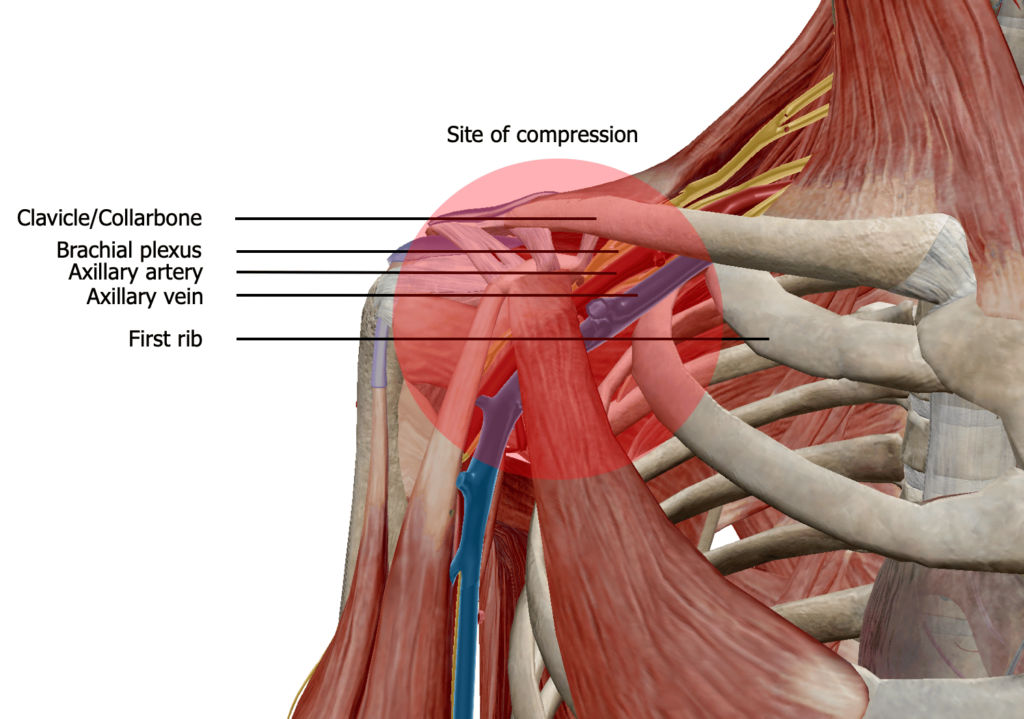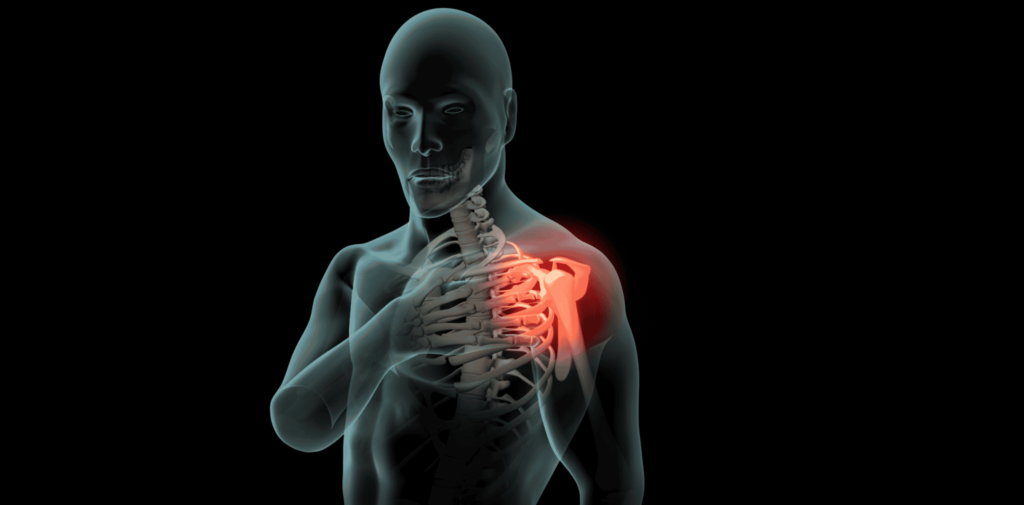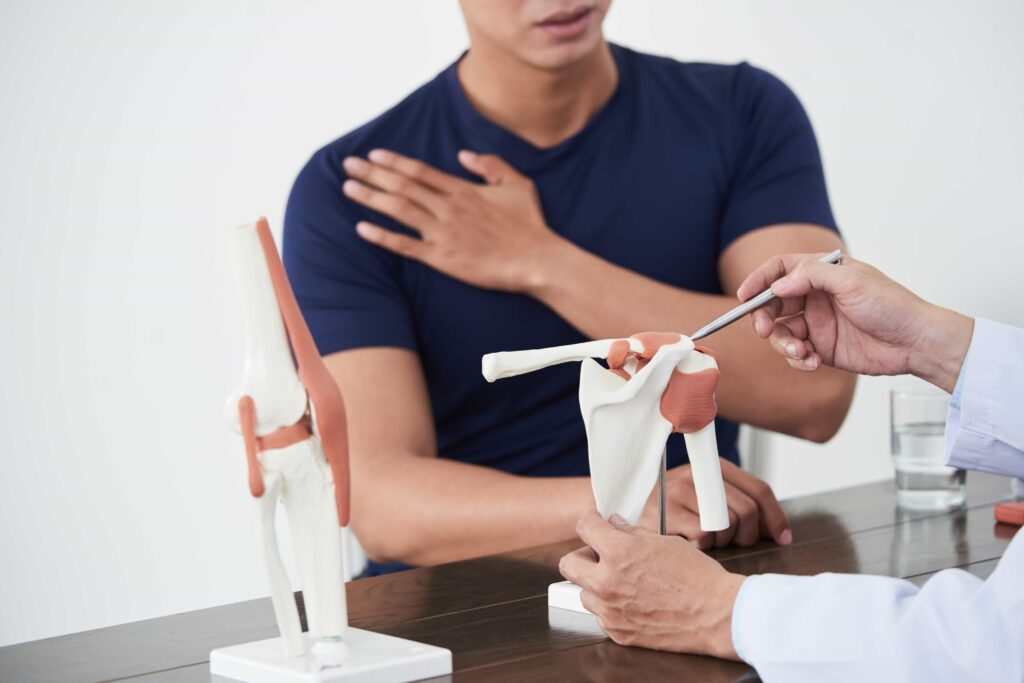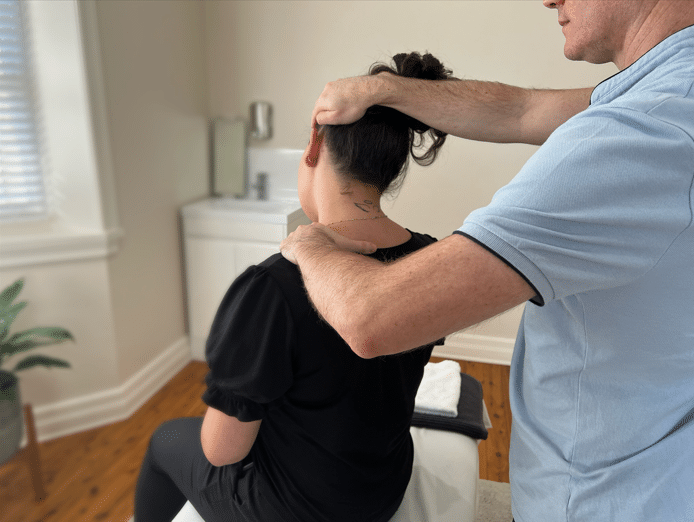- 02 9712 1736
- [email protected]
- 212 Great North Road, Five Dock, NSW 2046
- Open 7 days a week
Shoulder bursitis is a common condition that occurs when the bursa in your shoulder becomes inflamed. Bursae are small, fluid-filled sacs that act as cushions between bones and soft tissues, reducing friction and allowing smooth movement. In the shoulder, there are several bursae that can become inflamed, but the most commonly affected is the subacromial bursa.

The shoulder joint is made up of three bones: the humerus (upper arm bone), the scapula (shoulder blade), and the clavicle (collarbone). The complexity of the shoulder joint stems from the range of motion that is available to it. The shoulder joint has the widest range of movement available to a joint in the body. Like the hip joint, the shoulder joint is a ball-and-socket joint. However, unlike the hip joint, the shoulder joint features a shallow socket (glenoid cavity) and a large ball (humeral head), akin to a golf ball on a tee.
The wide range of motion available to the shoulder joint then comes at the expense of reduced stability, which is why it is so easy to dislocate a shoulder. Various muscles and ligaments have to work together within a tight space to ensure stability of the shoulder joint while still allowing for fluid movement. The bursae in turn allow these structure to move smoothly while the shoulder is in motion, by reducing friction associated with movement. Out of these, the rotator cuff, a group of muscles and tendons surrounding the shoulder joint, is the most significant part in providing stability and allowing you to lift and rotate your arm.
The shoulder joint is prone to injury, especially with repetitive overhead movements or lifting heavy objects above the level of your shoulders, which is associated also with irritation of the shoulder bursae. Activities such as painting, swimming, or playing tennis can put stress on the shoulder and increase the risk of developing shoulder bursitis.


Shoulder bursitis is often caused by repetitive motions or overuse of the shoulder joint. Other common causes include trauma or injury to the shoulder, poor posture, and underlying conditions such as arthritis or gout. Certain occupations or activities that require repetitive overhead movements, such as painting, carpentry, or sports like baseball or swimming, can also increase the risk of developing shoulder bursitis.

The most common symptom of shoulder bursitis is pain and tenderness in the shoulder, especially when raising or lowering your arm. You may also experience inflammation symptoms of swelling, warmth, or redness in the affected area. In severe cases, the pain may be constant and interfere with your daily activities.

The conventional approach to shoulder bursitis often involves rest, ice, and anti-inflammatory medications to reduce pain and swelling. Physical therapy exercises can help improve strength and flexibility in the shoulder joint, reducing the risk of future injury. In some cases, cortisone injections may be recommended to reduce inflammation and pain, to allow patients to perform these exercises. If these approaches fail to provide relief, surgical intervention may be advised.
Chiropractic care can be an effective method of treatment for shoulder bursitis. Contrary to what most people think, chiropractors focus on the musculoskeletal system and work with all joints in the body and not just the spine. Chiropractors are trained to address poor joint mobility and identify compensatory mechanism of movement which result in poor joint function and health. Our comprehensive, multi-step approach to shoulder bursitis involves firstly reducing inflammation and muscle guarding around the shoulder joint to alleviate pain and restore pre-injury mobility using different modalities of manual therapy, and then retraining correct movement pattern in the shoulder to prevent future re-injury.
.

Your chiropractor may also perform spinal manipulation to improve your posture and joint alignment of your upper back and shoulders, which may help with your shoulder bursitis. This involves applying controlled force to the joints of the spine in the upper back so as to improve upper back mobility. Restoring proper alignment and movement to the spine is necessary to allow the shoulder to return to a more natural position and relieve pressure on the shoulder joint and surrounding tissues, which may help reduce inflammation and pain.

Physical therapy is often recommended as a treatment for shoulder bursitis. A physical therapist can design a program of exercises and stretches to help improve strength and flexibility in the shoulder joint. This can help reduce pain and improve range of motion. In addition to exercises, physical therapy may also include modalities such as ice, heat, or ultrasound to help reduce inflammation and pain.
Cortisone injections may be recommended for shoulder bursitis to help reduce inflammation and pain. Cortisone is a powerful anti-inflammatory medication that is injected directly into the affected bursa. This can provide temporary relief from symptoms, but it is not a long-term solution. Cortisone injections are typically used in conjunction with other treatments, such as physical therapy, to help manage shoulder bursitis.
In some cases, surgical intervention may be necessary to treat shoulder bursitis. This is usually only considered if conservative treatments have failed to provide relief. Surgical options for shoulder bursitis may include removing the inflamed bursa or repairing any underlying damage to the shoulder joint, such as a SLAP lesion or tendinosis.


After recovering from shoulder bursitis, it is important to focus on functional movement to prevent future injury. This may include exercises to improve strength and flexibility in the shoulder joint, as well as proper body mechanics to avoid placing undue stress on the shoulder. Your physical therapist can help you develop a program of exercises and movements to help you safely return to your normal activities.
Shoulder bursitis is a common condition that can cause pain and inflammation in the shoulder joint. It is often caused by repetitive motions or overuse of the shoulder, but it can also be the result of trauma or injury. Treatment for shoulder bursitis typically involves rest, ice, and anti-inflammatory medications to reduce pain and swelling. Physical therapy exercises can help improve strength and flexibility in the shoulder joint, reducing the risk of future injury. In severe cases, cortisone injections or surgical intervention may be necessary. With proper treatment and rehabilitation, most people with shoulder bursitis can recover fully and return to their normal activities.

Forest Lodge, Annandale, Glebe, Leichhardt, Balmain, Haberfield, Canada Bay, Rozelle, Rodd Point, Wareemba, Stanmore, Petersham, Lilyfield, Hunters Hill, Enfield, Cabarita, Mortlake, Rhodes, Burwood Heights, Birchgrove, Gladesville, Huntleys Point, Abbotsford, Ashfield, Croydon Park, Croydon, Chiswick, Russell Lea, Burwood, Strathfield, Concord, Drummoyne, North Strathfield, Liberty Grove, Dulwich Hill, Lewisham, Camperdown, Ashbury, Homebush, Homebush West, Woolwich, Henley, Summer Hill, Sydney Olympic Park

212 Great North Road, Five Dock, NSW 2046
Onsite parking available
Phone: 02 9712 1736
Email: [email protected]
About
Five Dock Osteopathic & Chiropractic is located in Canada Bay, in Sydney’s Inner West. Servicing suburbs including Burwood, Croydon, Drummoyne, Five Dock, Haberfield, Concord, Abbotsford, Chiswick, Leichhardt, Wareemba, Russell Lea, Summer Hill, Strathfield.
Clinic hours
Monday, Tuesday, Thursday 7AM – 7PM
Wednesday, Friday 7AM – 6PM
Saturday 7AM – 2PM
Sunday 8AM – 2PM
Contact details